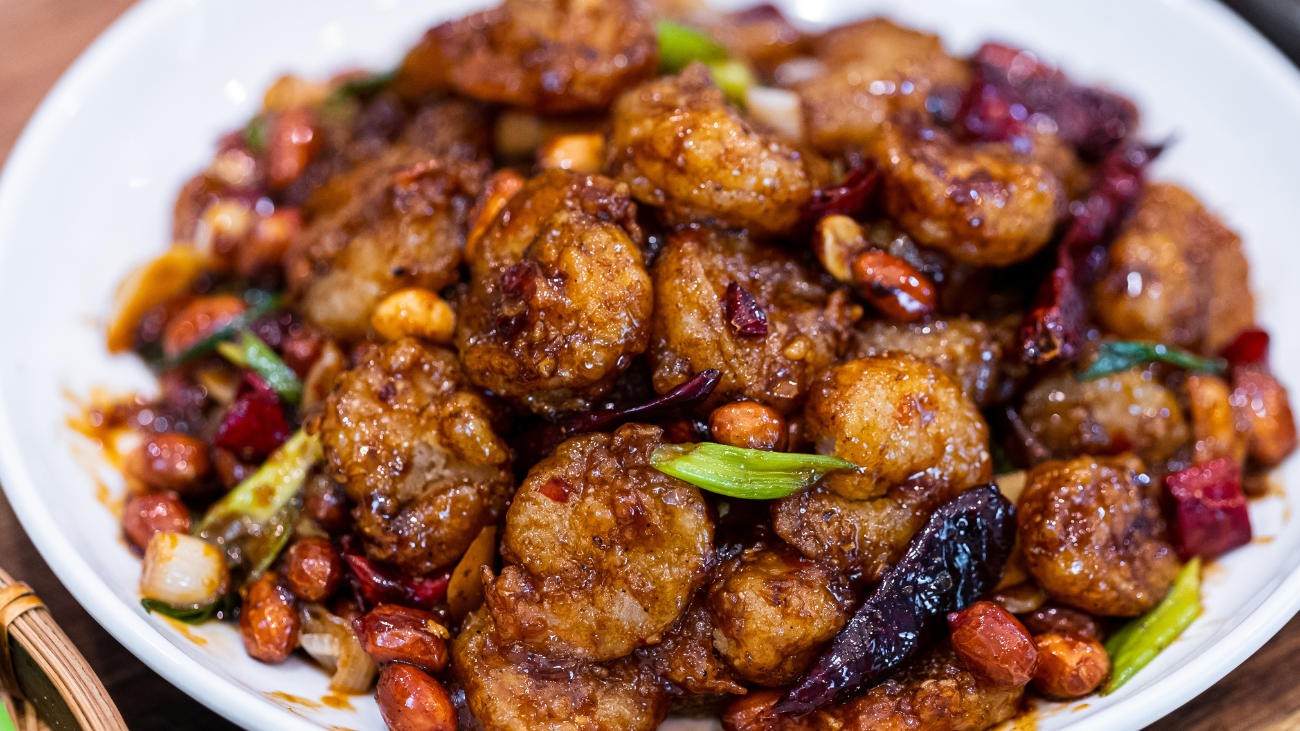BETTER THAN TAKEOUT – Easy Kung Pao Shrimp Recipe
Rated 3.6 stars by 30 users
Category
Seafood
Author:
Kung Pao Shrimp is a classic Sichuan dish. As a variant of Kung pao chicken, it is easy to make and great to serve with white rice because the taste is flavorful, complex, and well-balanced. As a variant of kung pao chicken, one of the differences is that this dish is deep fry and kung pao chicken is stir-fried. So the shrimp is slightly crispy and coated with a glossy sauce.

Ingredients
To Marinate the Shrimp
-
1 lb of shrimp peeled and deveined
- 1/3 tsp of salt
- Some white pepper to taste
- 2.5 tsp of Chinese cooking wine
- 1 tbsp of cornstarch
- 2/3 cup of cornstarch
To Make the Sauce (碗芡)
- 4.5 tbsp of sugar
- 1.5 tsp of cornstarch
- 2 tbsp of light soy sauce
- 2.5 tbsp of Chinese black vinegar
- 3 tbsp of water
Others
- 1.5 cups of oil for deep frying
- 1/2 cup of peanuts
- 4 cloves of garlic sliced thinly
- 1/2 inch of ginger sliced thinly
- 4 scallions dice the white and cut the green part into short pieces
- a handful of red dried chilies cut some open to release the flavor
- 1/2 tbsp of Sichuan peppercorn powder
- 1 tbsp of Sichuan Dou Ban Jiang
Products Used
Directions
Marinade the shrimp with salt, white pepper powder, Chinese cooking wine, and 1 tbsp of cornstarch. Please pay attention to the ingredient list if you are buying frozen shrimp. Most shrimp on the market is frozen with a salt solution. In that case, you must use less salt or rinse the shrimp thoroughly before seasoning.
- Place 1/3 cup of cornstarch at the bottom of a big container. Add the shrimp and cover with another 1/3 cup of cornstarch. Put on the lid and shake well. Leave the shrimp in the container and set it aside. The first tbsp of cornstarch in the marinade acts like glue, which will catch more starch while shaking.
- To make the sauce (or what we call 碗芡), thoroughly combine the sugar, cornstarch, light soy sauce, Chinese black vinegar, and water. You can replace Chinese black vinegar with white or rice vinegar; however, you will miss a bit of the distinctive fermented taste.
- Add 1.5 cups of oil and the peanuts to the wok. Stir constantly over medium-low heat for 2-3 minutes. Remove the peanut when you see they are slightly opened; set them aside. If allergic to peanuts, use a different kind, such as walnut or almond. If your peanuts are roasted already, skip this step.
- Put the shrimp into a sieve and shake it a few times to eliminate the excess starch. Next, heat the oil to 400°F /204°C and fry the shrimps in 2 batches for 2-3 minutes each. Crowding the wok risks overcooking the shrimp as it will quickly drop the oil’s temperature.
- Transfer the shrimp to a rack to drain out the excess oil. Sieve the starch crumbs from the oil before frying the next batch of shrimp.
- Remove most of the oil and keep 1.5 tbsp in the wok. Add garlic, ginger, the white part of the scallions, red dried chilies, and the Sichuan Dou Ban Jiang. Stir over medium-low heat for a couple of minutes or until fragrant.
- Add the Sichuan peppercorn powder. Pour in the sauce. Keep stirring until the sauce is thickened. Add the reserved green part of the scallion, the peanuts, and the shrimp. Toss until everything is coated thoroughly. Serve with white rice.
- This dish can be made without chilies, Sichuan peppercorns, and the Dou Ban Jiang. That’s what most Americanized takeout restaurants do. However, these three ingredients create the classic spicy and numbing flavor, which stands the authenticity.







































































